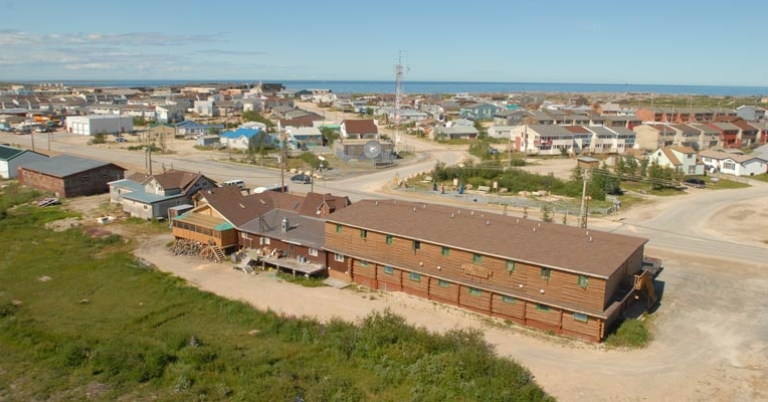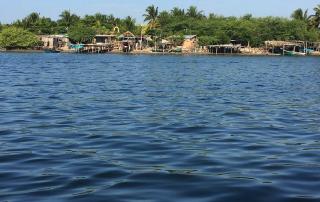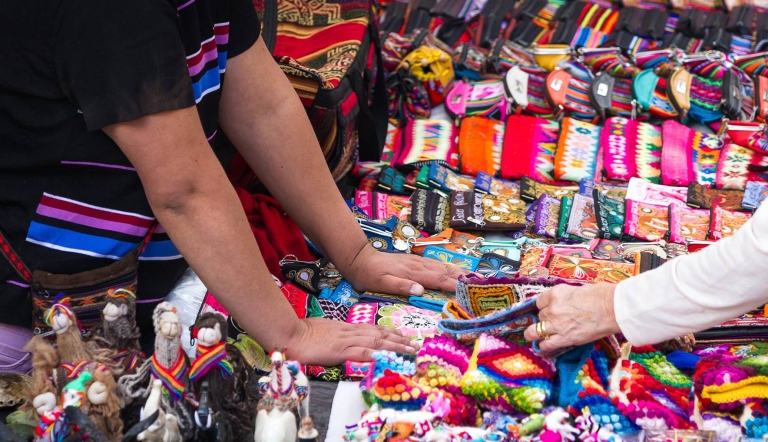Visitors to the province of Manitoba can get a taste of the tundra in Churchill, one of the best sites to spot polar bears and beluga whales south of the Arctic Circle.
People have been attracted to Hudson Bay and the Churchill area of Manitoba for thousands of years. Today, people continue to make the journey to Churchill to admire and research the natural beauty of the northern lights and the iconic wildlife.
Churchill is also on the forefront of climate science, with researchers flocking here from around the world to study the impacts of rising global temperatures on the Arctic.
Entry & Exit Requirements
U.S. citizens must have a valid passport to enter Canada. Passports must be valid at the time of entry, with at least one blank page required. As this requirement is subject to change at any time without notice, we recommend at least 6 months' validity.
A visa is not required for visits up to 180 days.
If you are not traveling with a U.S. passport, please check with the Canadian Embassy for the requirements based on your nationality.
Health Information
IMMUNIZATIONS
The CDC recommends that all travelers be up to date on routine vaccinations such as measles-mumps-rubella (MMR) vaccine, diphtheria-pertussis-tetanus vaccine, varicella (chicken pox) vaccine, and your yearly flu shot before every trip.
There are no vaccinations required for entry into Canada.
The CDC recommends that unvaccinated travelers receive hepatitis A and B vaccines before visiting Canada.
Please consult your physician for additional information and recommendations based on your individual circumstances.
FROSTBITE
Frostbite is damage to the skin from freezing and is due to prolonged exposure to cold temperatures. Symptoms include patches of reddened skin that become white, hard, and swollen; or skin that burns, tingles, or is numb or painful. Severe cases can result in blisters or ulcers forming and may involve deeper tissues. The most common sites for frostbite are the fingers, hands, toes, feet, ears, nose, and cheeks.
To avoid frostbite, dress warmly and in layers but avoid tight clothing as it may reduce circulation. Keep the face and extremities covered. Avoid overheating and excessive perspiration. Change wet clothing, especially socks and gloves.
HYPOTHERMIA
Hypothermia is life threatening. It is caused by cold, wet, or windy weather that causes the body to lose heat faster than it can produce heat. Hypothermia can occur in rugged mountain terrain where the weather can change extremely quickly, or after being soaked in a stream crossing or a boating accident.
Symptoms include feeling cold, uncontrollable shivering, clumsiness due to loss of muscle coordination, slurred speech, inability to think clearly, and eventual unconsciousness and cessation of reflexes including heart and lung functions. Many victims in the later stages of hypothermia feel warm and try to shed clothing.
To treat hypothermia, first warm the core of the body before the extremities. Remove any wet clothing. Re-warm the victim slowly; do not warm fast by immersing in warm/hot water. Provide shelter out of the weather. Warm drinks are not necessary, but may help in the psychological recovery. Do NOT give alcohol. Try to keep victim awake as this helps keep the body temperature up.
Animal Bites/Rabies
Avoid wild animals that seem unusually curious or don’t run away from humans. Bats, foxes, skunks, raccoons, and other mammals are known to carry rabies in Canada. In the unlikely event of being bitten, clean the wound and control bleeding. Seek medical attention immediately.
Sun exposure
The effects of the sun can be damaging to the eyes and skin. Spending time outdoors exposes you to the sun’s harmful ultraviolet (UV) rays, even on cloudy days. To protect yourself from the sun, use a broad spectrum sunscreen of at least SPF 15, protect skin with clothing, wear a wide-brimmed hat and sunglasses, and drink plenty of fluids.
Suggested Packing List
Everyone has personal preferences when it comes to packing; for this reason, the information below is offered as a general guide and not a definitive list. You know yourself best: Use your discretion and pack what you think will serve you, based on your personal preferences and specific itinerary. You may find many of the items below in our Gear Store.
CLOTHING
Bring enough clothing suitable for the length of your program. Pack clothing that can be worn in layers to adapt to weather changes throughout the day.
- A combination of short- and long-sleeved shirts, turtlenecks: ability to layer is very important as mornings and evenings can be very cool, warming up during the day.
- Shorts: one or two pairs for warm days.
- Pants: Medium weight cotton pants or jeans, plus a pair of fast-drying pants
- Sweater, sweatshirt, fleece, or medium-weight jacket
- A lightweight rain jacket or poncho
- Hat with brim
- Thermal undergarments
- Beanie or knit cap
- Visor/wide-brimmed sun hat
- Mittens or gloves for the boat tours
- Raincoat or poncho with rain hat/hood (this is recommended for the various boat trips)
- Socks: Bring extra pairs.
- Footwear: Comfortable walking shoes/hiking boots, waterproof boots are ideal; you may also want a pair of old sneakers or water shoes, Tevas or Keen-style water shoes, and/or slip-on sandals or flip-flops for around your accommodations
MISCELLANEOUS
- Binoculars and lens cleaner
- Camera and related equipment: Pack extra memory cards and batteries.
- Flashlight or headlamp
- A small daypack for hikes and excursions
- Photocopies of ID and other travel documentation
- Prescription drugs and a copy of the prescription
- Personal toiletries
- Sunscreen and lip balm with SPF (30 or higher recommended)
- Insect repellent
- Sunglasses
- Reusable water bottle
- Alarm clock
- Zip-top style baggies (to use as dry bags or for storing wet or muddied shoes/clothing)
- Notepad or journal and pen
- Chargers for electronics
In addition to your toiletries it is useful to pack a small medical kit which you can easily prepare. Helpful items include a pocketknife, a lighter, Band-Aids, antihistamine (such as Benadryl), a pain-reliever, individually-wrapped moist towelettes, anti-diarrhea medicine, anti-fungal cream, an extra pair of disposable contact lenses or glasses if you wear them, and a small sewing kit.
NOTE: Please do not pack valuables such as money, cameras, jewelry, and expensive clothing in your checked baggage. We cannot be held responsible for any losses.

Questions
For more information, contact us at 800-451-7111 or email travel@holbrooktravel.com.





























